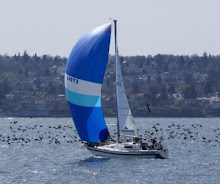
This post is a departure from all the previous entries but such posts may be presented on occasion, so don't be surprised. The
Sydney Morning Herald had an article a short while back entitled "You are not real churches, Pope says to Protestants." The piece was written by John Hooper in Rome and Stephen Bates in London dated July 12, 2007.
Here are a couple of quotes from the article. "Protestant churches have reacted with dismay to a new declaration approved by the Pope insisting they were mere 'ecclesial communities' and their ministers in effect phonies with no right to give communion."
Further: "The view that Protestants cannot have churches was first set out by Pope Benedict seven years ago when, as Cardinal Ratzinger, he headed the Vatican ministry for doctrine. A commentary attached to the latest text acknowledged that his 2000 document,
Dominus Iesus, had caused no little distress."
But it added: "It is nevertheless difficult to see how the title of 'church' could possibly be attributed to [Protestant communities], given that they do not accept the theological notion of the Church in the Catholic sense and that they lack elements considered essential to the Catholic Church."
The above photo is from the article in the Sydney Morning Herald. To read the full article, go to the following link:
http://www.smh.com.au/articles/2007/07/11/1183833598314.htmlAs one that has been exposed to various religious denominations throughout my life, these statements appear to be a departure from that of Pope John Paul II and are more divisive of various churches, and focusing on their differences, rather than inclusive of what all have in common. There is enough trouble in the world without fanning the flames of discontent. We all live together on this globe we call Earth and we should learn to live with one another in peace and harmony rather than focusing on our differences. There is enough hatred, discord and war in the world as it is, so it's not advisable to add to it, in my opinion. I don't see what church doctrine and hierarchy has to do with the message of peace and loving others as you would have them love you, or as the Biblical passage goes, "do onto others as you would have them do onto you!" In today's "me" generation this message is falling by the wayside. Further, it would seem proper to get one's own house in order before finding fault with others, atleast that is my thought on the matter. I welcome your comments.
 A week after the initial visit to the rose garden in Vancouver's Stanley Park I made another visit. Here are a few more photos from the second time. I don't remember the name of the above rose (should have written the name down) but I'll get it at the next visit. Tour buses are always passing through as you can see in the image below.
A week after the initial visit to the rose garden in Vancouver's Stanley Park I made another visit. Here are a few more photos from the second time. I don't remember the name of the above rose (should have written the name down) but I'll get it at the next visit. Tour buses are always passing through as you can see in the image below.

 The above two photos are of the same type of rose. The top one is older and the one below not fully opened. As the previous rose, I don't have a name. The 'Dortmund' rose, a climber, is featured in the next two images. The flowers are of a cluster-type. This climber was in my garden back in southwestern Ontario.
The above two photos are of the same type of rose. The top one is older and the one below not fully opened. As the previous rose, I don't have a name. The 'Dortmund' rose, a climber, is featured in the next two images. The flowers are of a cluster-type. This climber was in my garden back in southwestern Ontario.













































